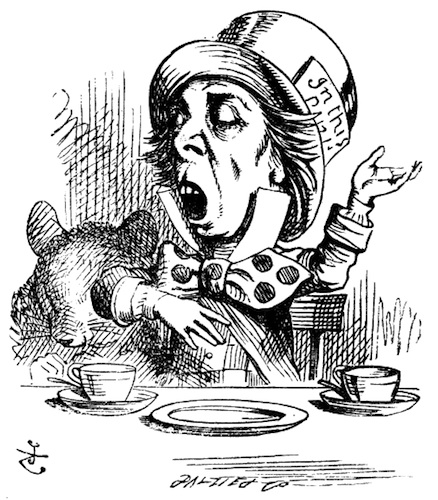The Surprising History of Why Hat Makers Were Considered Mad
Hats have always been a symbol of style, identity, and tradition. In our artisanal hat shop, every piece we create carries history and dedication. But behind this noble craft lies a story that’s as curious as it is unsettling: for centuries, hat makers were considered eccentric—even mad. This idea isn’t just a popular myth; it has roots in a very real chemical and social phenomenon.
Where Does the Expression “Mad as a Hatter” Come From?
The English phrase “mad as a hatter” became popular in the 19th century, although its origins go back even further. At that time, felt hat making was a widespread trade in Europe, especially in England and France. Craftsmen spent hours, days, and even weeks working with animal pelts, such as beaver or rabbit, to turn them into elegant and durable hats.
To bond the animal fur into a dense material known as felt, hat makers used a highly toxic chemical compound: mercury nitrate. This process, called “carroting,” released invisible but dangerous mercury vapors into the air.
Constant Exposure Without Protection
Hat-making workshops in the 18th and 19th centuries were often poorly ventilated and unsanitary. Artisans worked long hours inhaling mercury vapors, unaware that they were slowly poisoning themselves.
Prolonged exposure to mercury led to a condition now known as mercury poisoning, or “mad hatter disease.” It caused severe neurological symptoms: trembling hands, speech difficulties, extreme irritability, memory loss, anxiety, insomnia, and even hallucinations. Some hatters suffered nervous breakdowns or lost their sanity completely. With no clear medical explanation at the time, society simply labeled them as “mad.”
The Character Who Immortalized the Madness: The Mad Hatter
This image of the eccentric hat maker made its way into literature through Lewis Carroll, author of Alice’s Adventures in Wonderland (1865). One of the most memorable characters in the story is the Mad Hatter, who speaks in riddles, behaves erratically, and seems to live in his own world.
Although Carroll never explicitly said that his character was suffering from mercury poisoning, the connection between the Mad Hatter and the historical figure of the poisoned hatter is hard to ignore. Since then, the image of the mad hatter has become deeply rooted in popular culture.
A Dark History with an Important Lesson
Today, hats remain a symbol of elegance, but the way they are made has changed dramatically. In our workshop, we use natural materials, sustainable methods, and entirely safe processes. The health and well-being of the artisans who create each hat we sell is a top priority. While this story is disturbing, it also reminds us how far the craft has come and how important it is to value mindful, ethical craftsmanship.
It’s also a way of honoring those early hat makers who, with dedication and without knowing the risks, paid a high price for their art. They laid the foundation for a tradition that continues today with pride—but now with knowledge, responsibility, and respect for human life.
Are You Fascinated by the History Behind Traditional Crafts?
On our blog, we love sharing fascinating stories from the world of hats, their symbolism in different cultures, and how a simple accessory can mean so much more. Every hat in our shop is handmade with a deep respect for tradition and a strong commitment to the present.
We invite you to explore our collections and discover not just an accessory, but a story you can wear.
